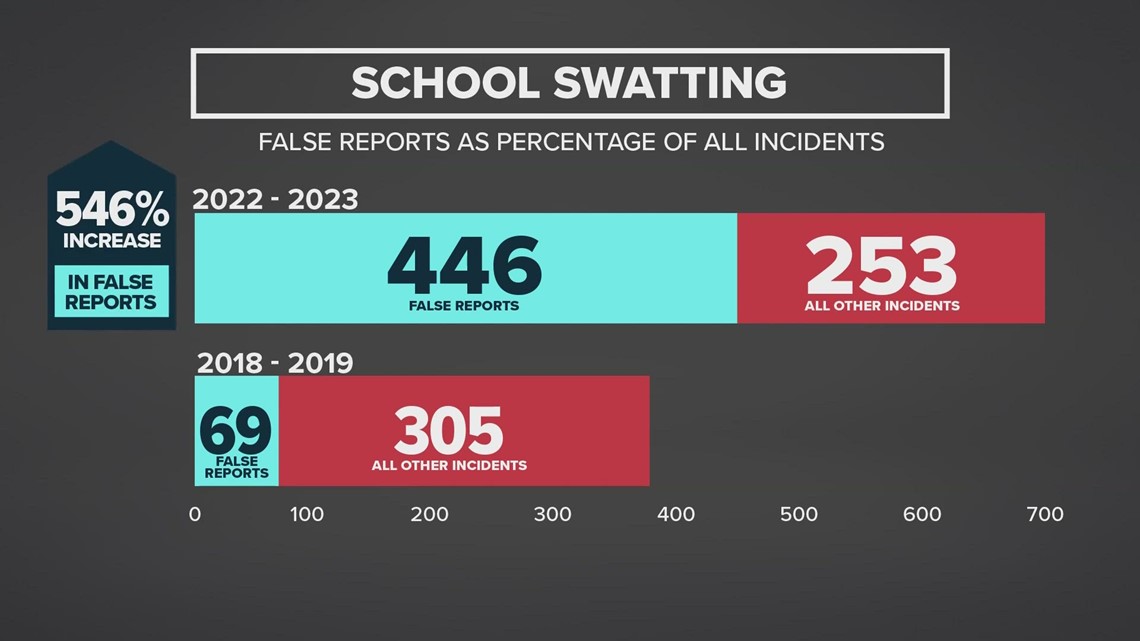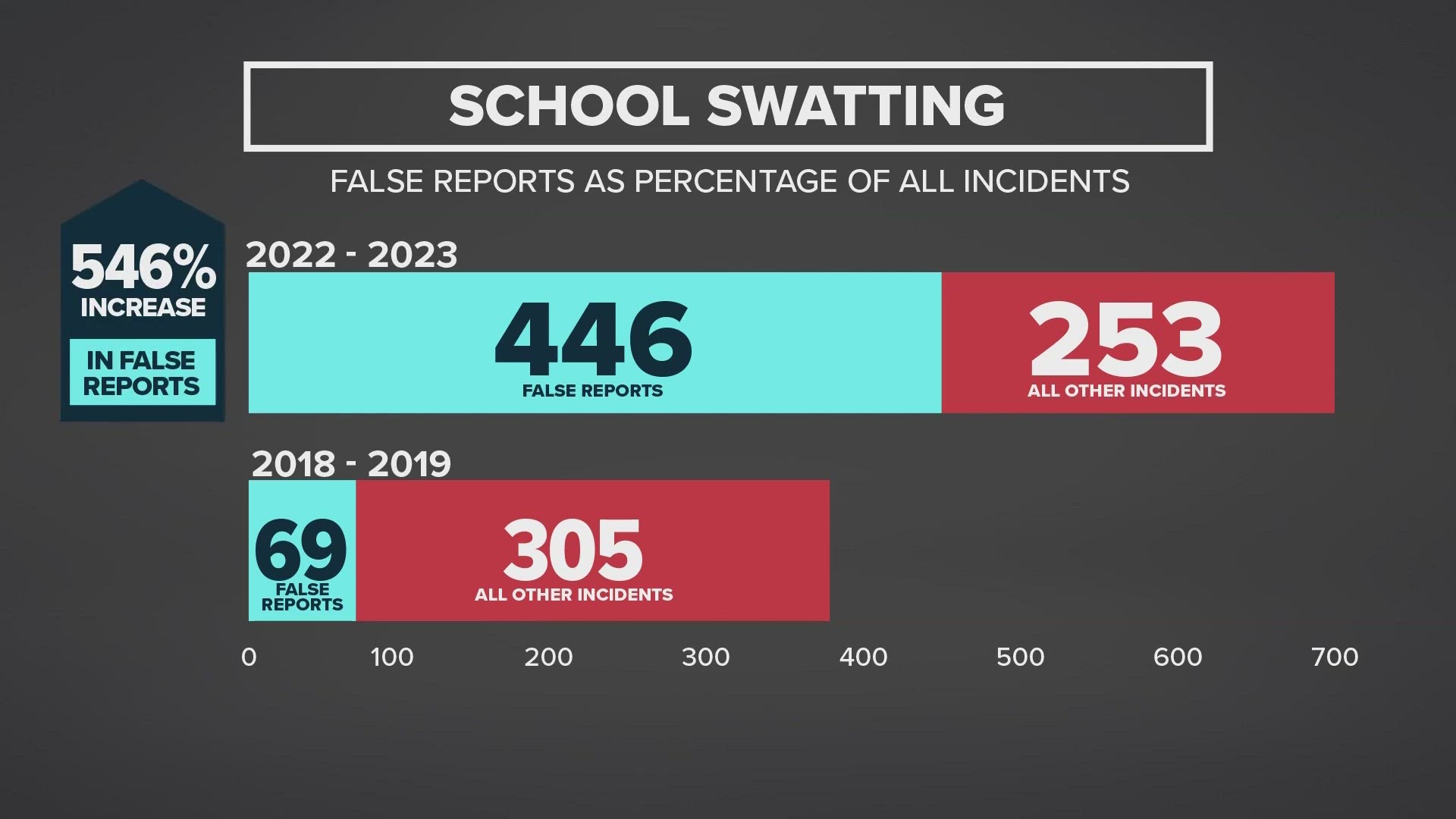COLUMBUS, Ohio — School districts across the state received threats over the weekend claiming to be from a “Russian organization.” The threats were quickly dismissed as a hoax, but some parents were still concerned.
Fake threats against schools have been on the rise in recent years.
The Educator’s School Safety Network tracks these false reports, namely shooting reports. There were just 69 false reports in the 2018-2019 school year. Those reports jumped to 446, a 546% increase, in the 2022-2023 school year.
The organization’s live track of false reports is on track to match the 2018-2019 school year.


“Schools are in a really tough, unenviable position. On one hand, you can't just say 'it's just a swatting threat. Let's just have a normal school day. We're not going to do anything'. We know there is a possibility for violence at our schools,” said Amanda Klinger, Educator’s School Safety Network (ESSN) Director of Operations.
ESSN helps to provide information and training to schools, law enforcement and others involved in handling threats to schools. That includes coming up with a plan to address the modern problem of large numbers of fake threats.
“We really work with schools to try and have that capacity - to have that ability to dial up that response and respond very quickly and very seriously,” said Klinger. "When working with law enforcement partners, we determine there isn't actually a threat here. It was just a hoax, this was just a threat, this was just swatting, that we're able to swiftly dial that response back down."
She said schools are forced to walk a fine line in how to react when threats come in because calling off class for every threat just gives the threat-maker satisfaction.
“There were a number of schools, not in Ohio, where they were getting threat, after threat, after threat over and over again. Leaders eventually said 'we have to do something to break this cycle,’” she said.
Even though the threats are fake, they can still affect a student’s ability to learn effectively.
A pediatric psychologist with Nationwide Children’s Hospital said that young children aren’t able to discern the immediate difference of a threat being fake and being real, so it can up their anxiety.
“They're having the conversations, but they're not processing them the same way adults are. So it can impact their mental health significantly. It's important for parent to check in constantly. Ask how they're feeling, how school's going, what they're afraid of,” Dr. Ariana Hoet said.
She said some students worry about the threats and it will distract them from learning or focusing on tasks.
“We know that one of the main worries when it comes to school is safety because of the things we're seeing. Kids may feel very anxious or nervous about going to school,” said Hoet. “Talk to your kids about the probability is very low that something will happen. We know that schools are still a safe environment even though we hear of scary things.”
One school in central Ohio did cancel class Monday.
The Logan-Hocking district made the decision to call off classes after receiving a second, unrelated threat.
The district’s superintendent told 10TV that threat was made on the social media app Snapchat by a student. That student has been contacted by local law enforcement and the Hocking County prosecutor is now involved.
Classes at Logan-Hocking schools will continue as normal for the rest of the week.

